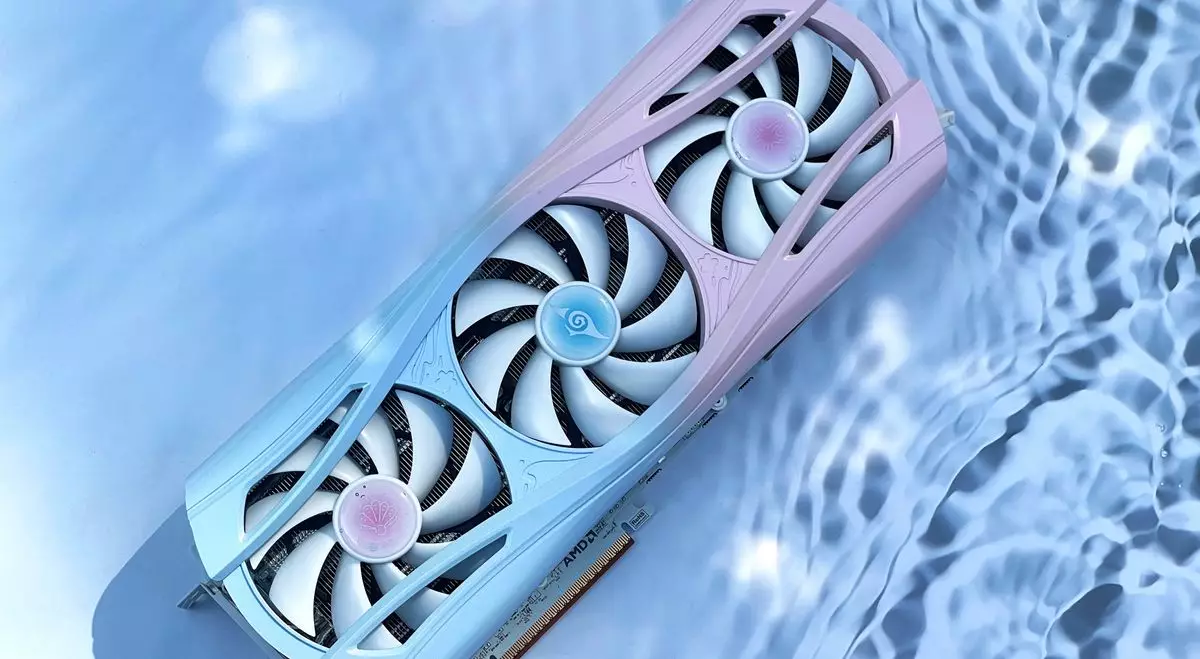The landscape of graphics processing units (GPUs) has been characterized by volatility, especially in the face of recent launches like AMD’s Radeon RX 9070 and 9070 XT series. Recently, David McAfee, an executive at AMD, addressed the pressing issue of availability at or near manufacturer’s suggested retail price (MSRP). As consumers eagerly attempted to lay their hands on these coveted cards, the ensuing frenzy left many wondering how AMD plans to stabilize this tumultuous market. The discourse points toward a critical crossroads for AMD as they aim to reconcile the surging demand with the tangible supply constraints that have plagued the market for years.
The sentiment surrounding AMD’s GPUs right now is palpable. With retail availability experiencing erratic restocking schedules, many enthusiasts have resorted to paying inflated prices, despite the brand’s promises to strive for equitable supply channels. Amidst these challenges, Yeston, a Chinese graphics card manufacturer, predicts that supply will stabilize post-April, giving enthusiasts a glimmer of hope that the tumultuous market might soon experience some semblance of normalcy.
The Challenge of Demand Versus Supply
While McAfee’s focus on restocking partner incentives is commendable, it reflects a broader systemic issue confronting the GPU market. “Priority number one is restocking all of our partners,” he stated, implying that AMD is navigating a complex web of stakeholders comprising board partners and retailers. The response exposes a vital understanding yet underlines a frustrating reality: the manufacturing and distribution of GPUs are fraught with complications that transcend conventional product launches.
In essence, AMD has traditionally offered the underlying chip to third-party manufacturers, who subsequently design their own variants. This decentralization leads to notable discrepancies in pricing and availability. Some manufacturers aim for budget-friendly options, while others seek to introduce premium features that appeal to enthusiasts, thus complicating AMD’s control over the final price that consumers ultimately pay. While such a strategy seems pragmatic on the surface, it raises pressing questions about accountability and direct market engagement.
To further complicate matters, McAfee’s acknowledgement that the launch of RDNA 4 marked a significant success for AMD hints at a double-edged sword. A surge in demand sounds promising, but it also amplifies concerns about ongoing availability. “The launch has been amazing,” McAfee notes, yet the enthusiasm must contend with the harsh reality that during the launch, not a single Radeon RX 9070 XT was available on significant platforms like Newegg.
Rethinking Control in the Graphics Arena
AMD’s decision to forgo launching its reference designs for the RX 9070 series might reflect a strategic shift aimed at fostering innovation among third-party manufacturers. However, this relinquishing of control raises formidable questions about customer access to price-competitive cards. Can AMD effectively balance its creative freedoms with the consumers’ right to choose?
Right now, the graphics card market feels a bit like a classic tale of supply and demand on steroids. Consumers stand poised and ready to buy,—and many have been left disenfranchised due to supply chains failing to meet the frenzied demand for next-gen gaming power. While the trajectory of this demand could signal a slow stabilization, the industry has learned that markets can turn volatile in an instant.
Competition from Nvidia’s upcoming RTX 5070 cards brings additional uncertainty to the forefront. If availability finally normalizes later this summer, consumers might find themselves experiencing the joy of straightforward transactions—simply going online and purchasing their desired GPU with no added stress or inflated prices. But the roadmap toward such an era still feels like an elusive journey, considering the historical patterns of the GPU market.
Looking Ahead: The Consumer Experience
The stakes are high, and the window of opportunity for AMD to seize and maintain consumer trust is narrowing. It’s imperative that the company not only focuses on boosting production but also reassesses its distribution strategy and partner relationships to ensure consumers can access products without the bottlenecks that have characterized the market in recent years. The automotive analogy is fitting here; much like how car manufacturers must ensure rigorous demand meets supply, AMD too must strategize about getting their products into the hands of eager consumers in a more predictable manner.
As the situation unfolds, one question reverberates: Will this be the turning point for AMD, allowing it to solidify its position in a highly competitive landscape? Or will it remain a case study in missed opportunities, relinquishing consumer trust to a market that has long craved accessibility at a fair price? The answers may just reshape the GPU market and the customer experience for years to come.

